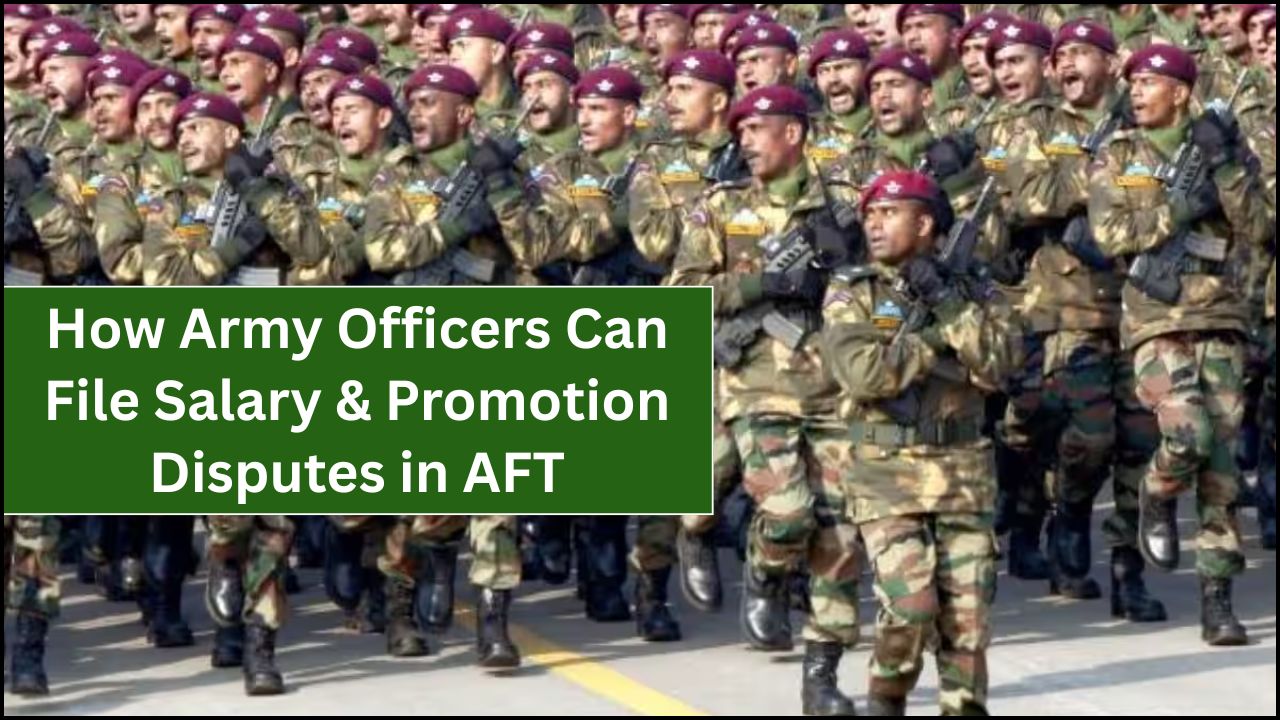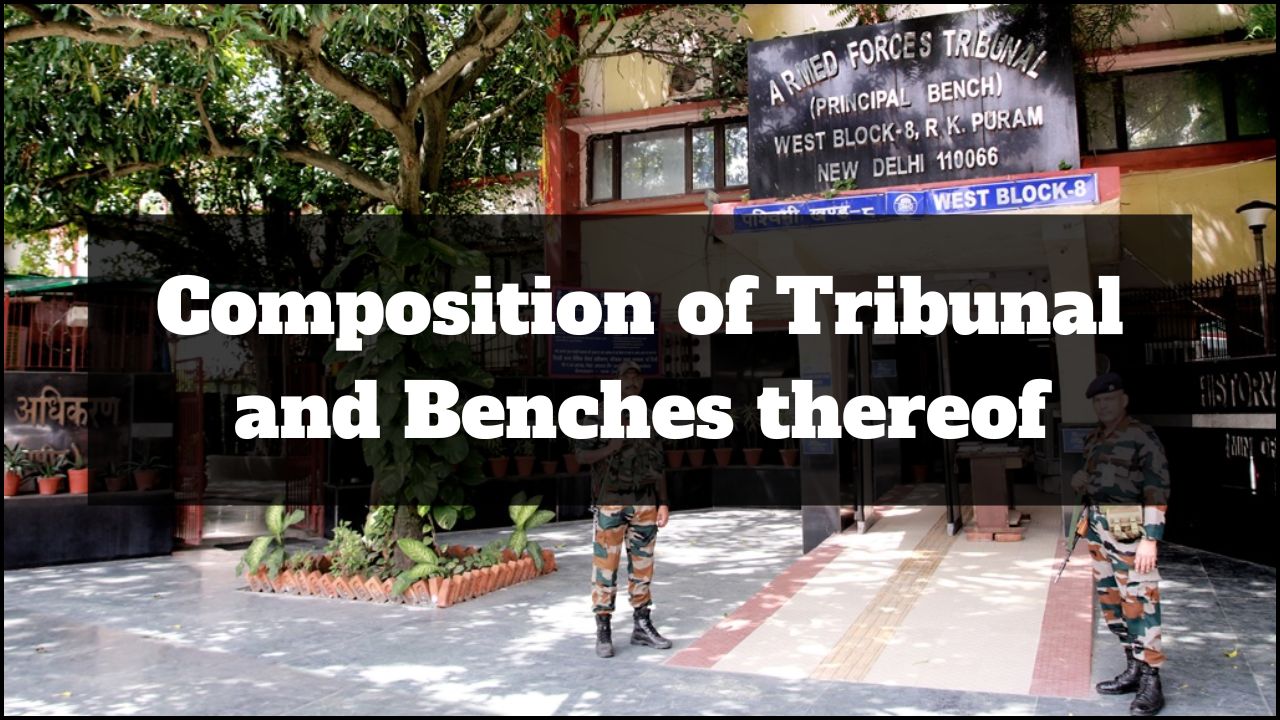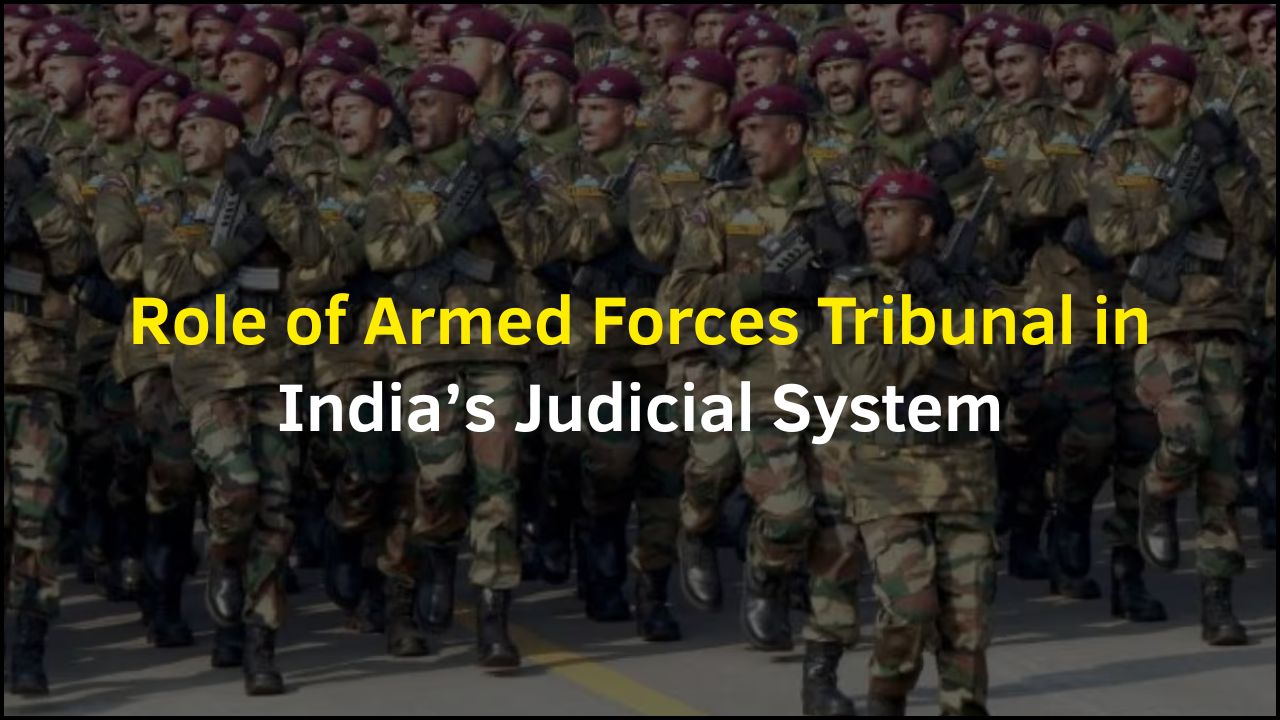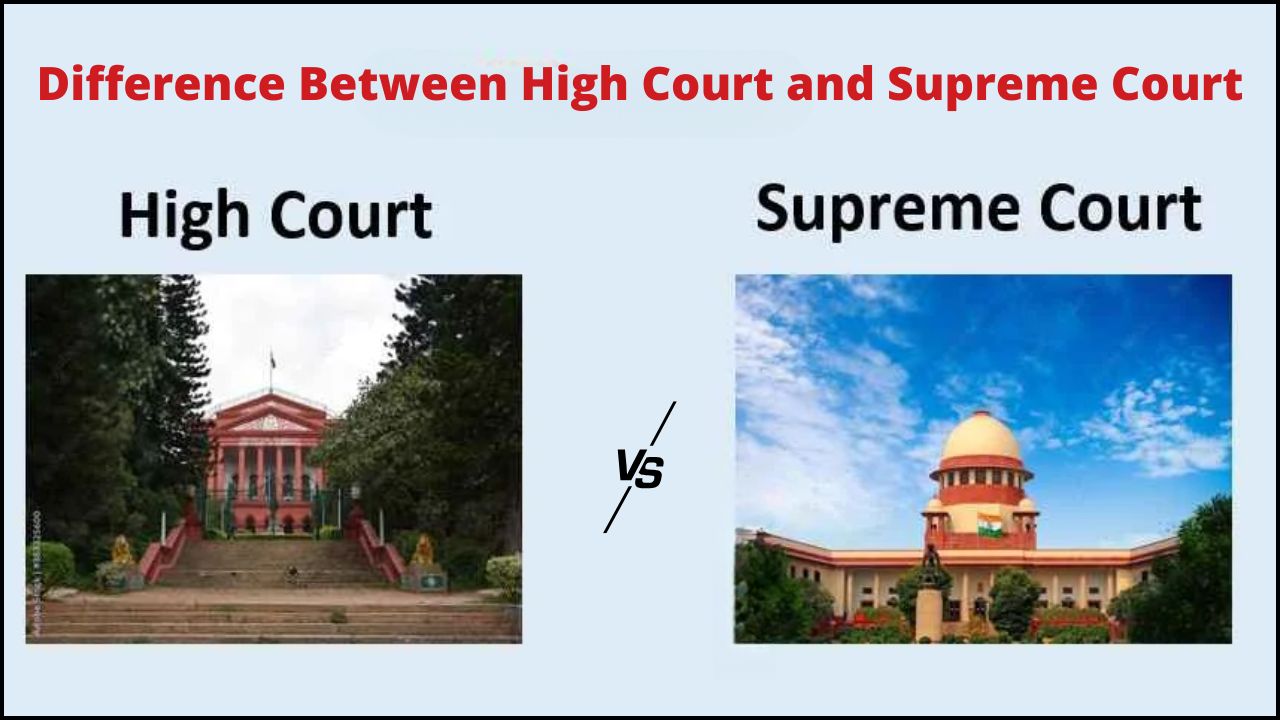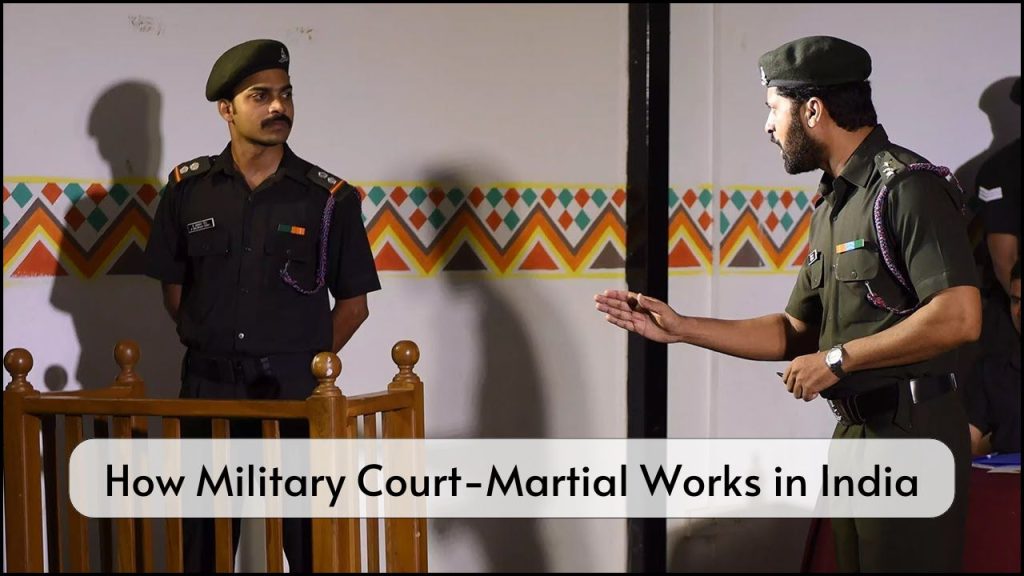
Military justice plays a very important role in maintaining discipline and order within the armed forces. A court-martial is a legal procedure used to try members of the military who are accused of breaking military laws. In India, the court-martial system is governed by the Army Act, 1950, the Navy Act, 1957, and the Air Force Act, 1950. This system is different from civilian courts and has its own structure and procedures. Understanding how military court-martial works in India helps to know how discipline is enforced among military personnel.
Table of Contents
Types of Court-Martial in India
Different types of courts-martial are used depending on the seriousness of the offence and the rank of the accused.
| Type of Court-Martial | Details |
|---|---|
| General Court-Martial (GCM) | Used for the most serious offences. Can try any officer or soldier and pass the heaviest punishments, including death. |
| District Court-Martial (DCM) | Handles less serious offences. Cannot try officers above the rank of captain. Cannot award death penalty or life imprisonment. |
| Summary General Court-Martial (SGCM) | Can try any person below the rank of junior commissioned officer (JCO). Usually held in emergencies or during active operations. |
| Summary Court-Martial (SCM) | Used for minor offences. Only applies to soldiers below the rank of JCO. Very fast and simple trial process. |
Applicable Laws for Court-Martial
Military justice is not based on regular criminal law. Special acts guide military courts.
- Army Act, 1950 – Governs Indian Army personnel.
- Navy Act, 1957 – Applies to Indian Navy members.
- Air Force Act, 1950 – Used for Indian Air Force personnel.
- Armed Forces Tribunal Act, 2007 – Allows appeals against court-martial verdicts.
Who Can Be Tried by Court-Martial
A court-martial can try individuals who are part of the military services and others under certain conditions.
- Commissioned officers
- Junior Commissioned Officers (JCOs)
- Non-Commissioned Officers (NCOs)
- Other ranks (sepoys, sailors, airmen)
- Persons not in the military (in rare cases when they are subject to military law)
Steps in a Court-Martial Process
Military justice follows a detailed process to ensure fairness and discipline.
| Step | Description |
|---|---|
| 1. Investigation | Initial inquiry is conducted by the commanding officer. If a serious offence is found, charges are framed. |
| 2. Charge Sheet | An initial inquiry is conducted by the commanding officer. If a serious offence is found, charges are framed. |
| 3. Summary of Evidence | Evidence is collected and recorded in the presence of the accused. |
| 4. Pre-Trial | Formal charges are written. The accused is informed of the charges. |
| 5. Court Formation | A panel is selected, usually consisting of officers senior to the accused. |
| 6. Trial Proceedings | Witnesses are examined, arguments are heard, and the accused can defend themselves. |
| 7. Verdict | Based on evidence, the panel gives its decision (guilty or not guilty). |
| 8. Sentencing | If guilty, punishment is decided according to the law. |
| 9. Confirmation | Verdict and punishment are reviewed by higher authorities before execution. |
Rights of the Accused
Even in a military court, the accused has several rights.
- Right to know the charges before the trial begins.
- Right to defend oneself or be represented by a defending officer or lawyer.
- Right to cross-examine witnesses.
- Right to appeal in the Armed Forces Tribunal after the final decision.
Punishments Awarded by Court-Martial
Different punishments are given depending on the offence and the court-martial type.
| Type of Punishment | Explanation |
|---|---|
| Death | Only General Court-Martial can give this. Used rarely for grave offences like treason. |
| Life Imprisonment | For serious crimes such as murder or desertion. |
| Dismissal from Service | Only a General Court-Martial can give this. Used rarely for grave offences like treason. |
| Reduction in Rank | Rank is lowered as punishment. |
| Forfeiture of Pay | Part or full salary is deducted. |
| Detention or Imprisonment | The accused is removed from military service. |
| Reprimand or Severe Reprimand | Official warning issued; goes on record. |
Appeals and Review of Court-Martial
Military personnel can challenge the decisions through a proper legal channel.
- Armed Forces Tribunal (AFT) – Can hear appeals against court-martial verdicts.
- High Courts and Supreme Court – Can be approached if there is a violation of constitutional rights.
- President of India – Has the power to grant pardons or reduce sentences.
Comparison with the Civilian Court System
Military courts work differently from civilian courts in many ways.
| Aspect | Court-Martial | Civil Court |
|---|---|---|
| Jurisdiction | Only military personnel | All citizens |
| Law | Military Acts (Army, Navy, Air Force) | Indian Penal Code, CrPC |
| Judge | Military officers | Judicial officers (judges) |
| Appeal System | AFT → High Court → Supreme Court | High Court → Supreme Court |
| Speed | Generally faster | Usually slower |
Famous Court-Martial Cases in India
Some court-martial cases have attracted public attention due to their nature.
- Captain Kalia Case – Concerned with the brutal killing of Indian soldiers during the Kargil War.
- Captain Prithvi Singh Case – Court-martialled for disobedience and conduct issues.
- Lt Col Purohit Case – Suspended and court-martialled in connection with the Malegaon blast.
Importance of Court-Martial in the Military
- Maintains discipline and ensures obedience to orders.
- Provides justice within the military structure.
- Protects military secrets by keeping sensitive trials within the military system.
- Ensures readiness by quickly resolving misconduct cases.
Final Thoughts
Military court-martial in India is a special justice system meant to handle discipline within the armed forces. It follows its procedures, separate from the civilian courts. While it is strict and quick, it also ensures fairness and gives the accused a chance to defend themselves. This system helps to maintain order and honor in the Indian military.


